Which Countries Celebrate Nowruz?
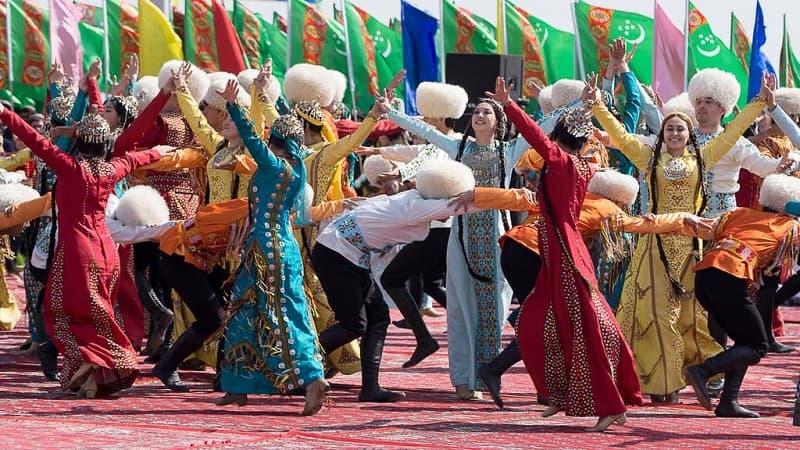
- Persis Collection
- 3 February 2025
- haftsin
- 5 minutes
Nowruz persian new year, the herald of spring and the new year in the Persian calendar, is more than just a festival. It’s a symphony of culture, heritage, and unity, celebrated by over 300 million people worldwide. As the earth renews itself, so do the hearts and homes of those who observe this ancient tradition. Let’s embark on a journey through the vibrant hues and rich textures of the Nowruz celebration, understanding its essence, traditions, and the joy it spreads across nations..Nowrooz, known as the Persian New Year, heralds the arrival of spring and is celebrated with grandeur and enthusiasm across various countries. This festival, deeply rooted in the rituals and traditions of the Zoroastrian religion, is not just confined to Iran but spans across several regions, reflecting a rich cultural tapestry.
What does Nowruz mean? when does it celebrated?
Rooted in the heart of ancient Persia, Nowrooz symbolizes rebirth and rejuvenation. It marks the vernal equinox when day and night are of equal length, signifying balance in nature. This celebration transcends beyond time and geography, uniting communities with its message of hope and renewal.
Nowruz means “New Day ” and is a celebration that transcends borders, uniting diverse cultures in welcoming the arrival of spring and the Persian New Year. Observed by over 300 million people worldwide, Nowruz is steeped in traditions that vary from country to country, each adding its unique flavor to the festivities.
Now rooz celebration is celebrated from 1-13 Farvardin every year (20 March to 2 April).
What is Nowrooz Celebration?
Nowruz festival, or Persian New Year, Nowrooz marks the beginning of spring and is celebrated on the spring equinox, around March 20th or 21st. With over 3,000 years of history, it originated in Greater Iran and spread to regions like Afghanistan, Central Asia, and parts of the Middle East. The word “Nowruz” means “new day” in Persian, symbolizing renewal and growth. It is a time for families to gather and celebrate the new season, focusing on Rebirth, renewal, and light defeating darkness.
The celebration is rooted in Zoroastrian traditions but has evolved to incorporate various cultural customs. A central element is the “Haft-Seen” table, an arrangement of seven symbolic items starting with the letter “S,” each representing a hope for the new year, such as health, prosperity, and love.
How to Celebrate Nowruz?
Nowruz celebrations include cultural, familial, and spiritual practices. Weeks before Nowrooz, with “Khaneh Tekani” (house cleaning) to symbolize shedding old habits and welcoming new opportunities. On Nowruz day, families gather around the Haft-Seen table with symbolic items like “sabzeh” (sprouts) for rebirth, “samanu” (pudding) for power, and “sir” (garlic) for health. The day involves visiting relatives, exchanging gifts, enjoying special foods like “sabzi polo” (rice with fish) and “baklava,” and participating in rituals like “Chaharshanbe Suri,” where people jump over bonfires to purify themselves for the new year.
Iran: The Heartland of Nowruz
The Significance of Haft-Seen
The Haft-Seen table is a central element of Nowruz in Iran, comprising:
- Sabzeh (Sprouted Wheat or Lentils): Symbolizes rebirth and growth.
- Samanu (Sweet Pudding): Represents power and strength.
- Senjed (Dried Oleaster Fruit): Denotes love and compassion.
- Seer (Garlic): Stands for health and medicine.
- Seeb (Apple): Signifies beauty and fertility.
- Somāq (Sumac): Reflects the sunrise and patience.
- Serkeh (Vinegar): Embodies wisdom and aging.
Chaharshanbe Suri: The Festival of Fire
On the eve of the last Wednesday before Nowruz, Iranians celebrate Chaharshanbe Suri by jumping over bonfires, chanting phrases that express a desire to leave behind the old and embrace the new. This ritual is believed to purify individuals and prepare them for the year ahead.
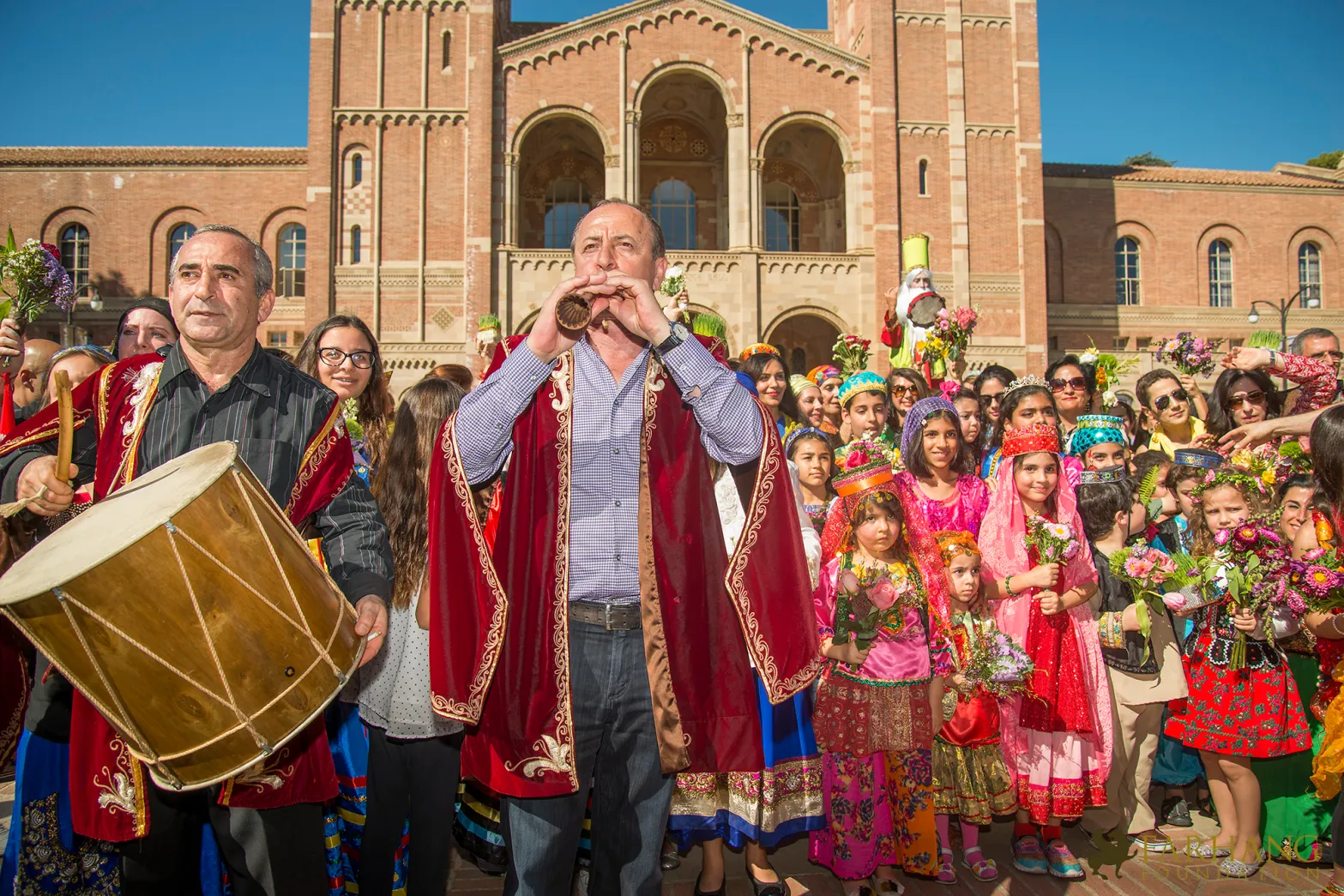
Afghanistan: A Blend of Tradition and Festivity
In Afghanistan, Nowruz is celebrated with a mix of cultural and religious practices. The “Guli Surkh” (Red Flower) festival in Mazar-i-Sharif marks the beginning of the new year, where people gather to enjoy music, poetry, and traditional games. Families prepare special dishes and engage in various customs to honor the occasion.
Haft Mewa: A Sweet Start to the Year
Afghan families prepare “Haft Mewa,” a compote made from seven types of dried fruits and nuts, symbolizing the sweetness and prosperity hoped for in the coming year. This delicacy is shared among family and friends during the Nowrooz celebrations.
Jashn-e Dehqān: Celebrating the Farmer’s Day
Coinciding with Nowruz, Afghanistan observes “Jashn-e Dehqān” or Farmer’s Day, highlighting the importance of agriculture in the country’s economy. Festivities include agricultural fairs, exhibitions, and traditional games, emphasizing the nation’s agrarian roots.
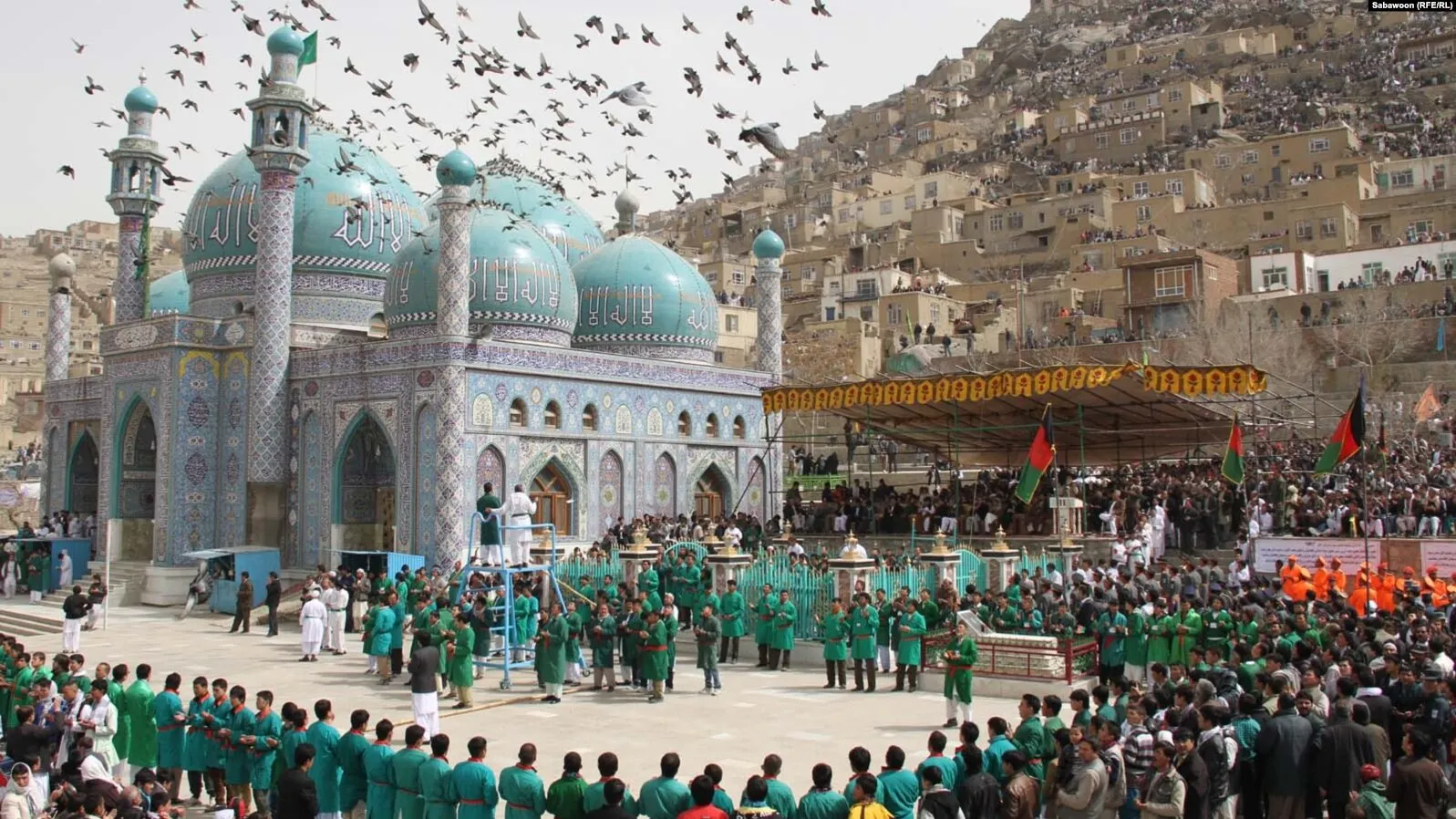
The Zoroastrian Community in India and Pakistan
The Parsi community in India and the Zoroastrian community in Pakistan also observe Nowruz with great reverence. This day is marked by religious rituals in fire temples and festive gatherings. Traditional Parsi cuisine, which blends Iranian and Indian flavors, plays a central role in the celebrations.
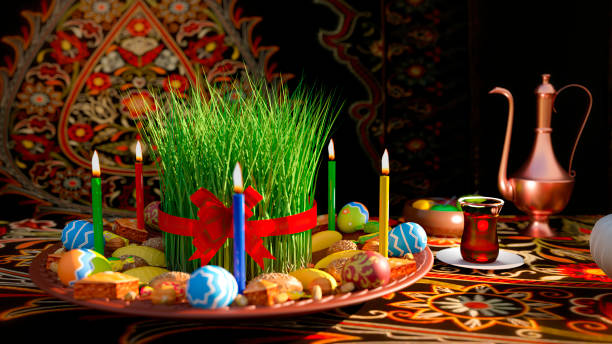
Central Asia: A Mosaic of Nowruz Traditions
Norooz celebration holds a significant place in Central Asian countries such as Kazakhstan, Uzbekistan, and Tajikistan, where it is celebrated with various unique customs and traditions.
Kazakhstan: Unity and Renewal
In Kazakhstan, Nowrooz is a public holiday celebrated with communal meals, traditional music, and sports competitions. People clean their homes, plant trees, and prepare traditional dishes like “Nauryz kozhe,” a soup made from seven ingredients, symbolizing prosperity.
Uzbekistan: Cultural Performances and Cuisine
Uzbekistan marks Nowruz festival with vibrant cultural performances, including traditional dances and music. Families prepare special dishes such as “Sumalak,” a sweet paste made from wheat sprouts, cooked collectively by communities, reflecting unity and cooperation.
Tajikistan: Traditional Sports and Festivities
In Tajikistan, Nowruz is celebrated with traditional sports like “Buzkashi” (a game played on horseback) and “Gushtigiri” (wrestling). People visit friends and family, exchange gifts, and enjoy traditional meals together.
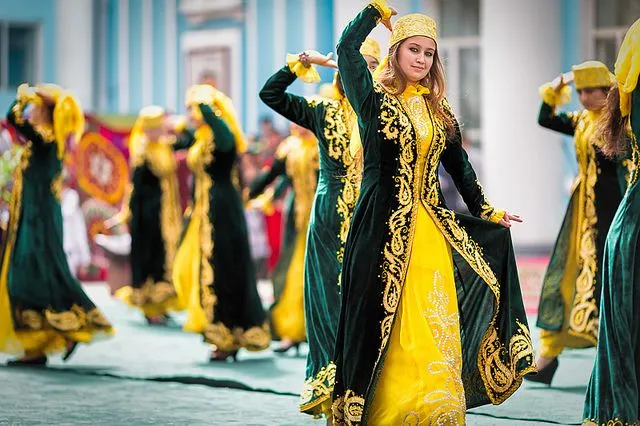
Turkey and the Nowruz Influence
Turkey’s Nowruz, or ‘Nevruz’, is a blend of pre-Islamic and Turkish customs. It’s a time for spring cleaning, preparing traditional foods, and lighting bonfires, symbolizing the purification and rebirth that spring brings. Nevruz in Turkey is a symbol of peace and brotherhood, reflecting the country’s diverse cultural heritage.
Norooz celebration in the Kurdish Regions
The Kurdish people in countries like Iraq, Iran, Syria, and Turkey celebrate Nowrooz as a festival of freedom and resistance. It is a day of great significance, commemorating the legendary resistance against tyranny. Traditional dances, wearing colorful dresses, and lighting fires are integral parts of the Kurdish Nowruz festival.
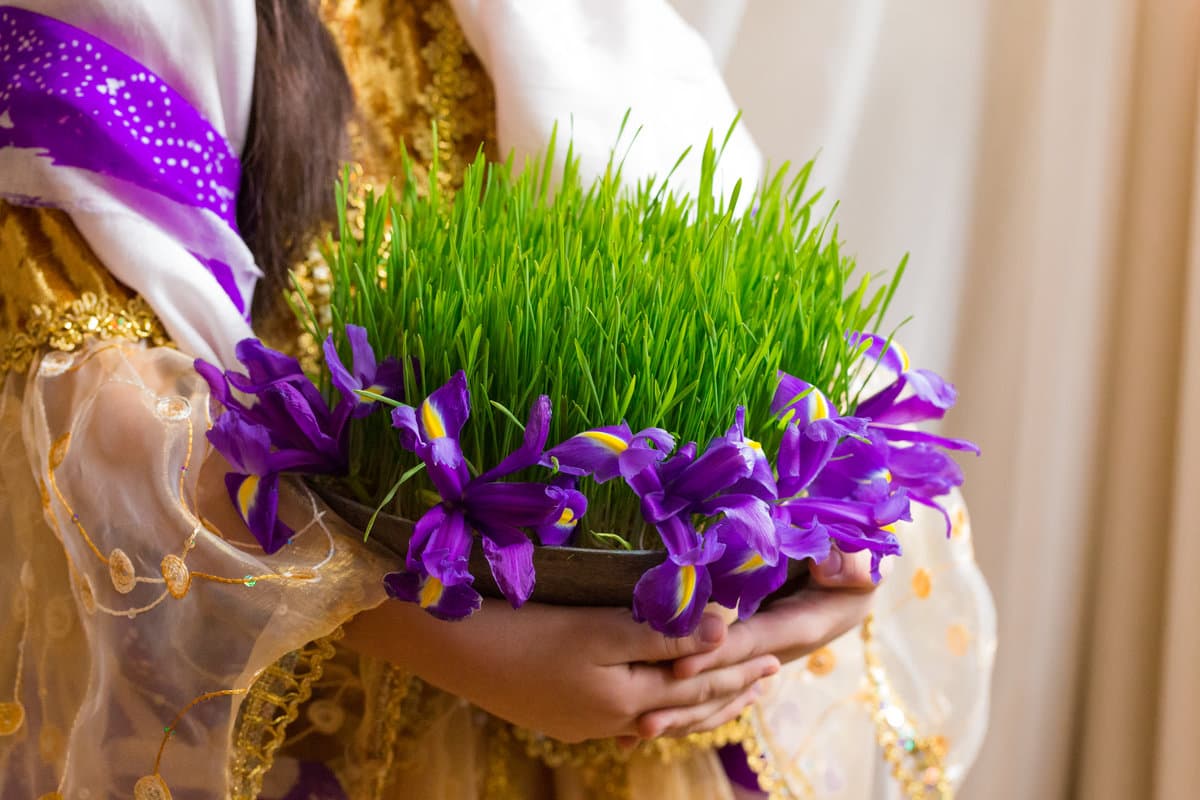
The Azerbaijani Twist to Norooz celebration
In Azerbaijan, Nowrooz is a time of joyous festivities, with street performances, music, and games like egg fighting. The preparation of special pastries like shekerbura and baklava is a cherished tradition. This festival signifies not only the coming of spring but also the cultural identity and heritage of the Azerbaijani people.
Nowrooz Celebrations in Iraq
Iraqi Kurds and Turkmen celebrate Nowruz with enthusiasm. Festivities include traditional music, dancing around bonfires, and the preparation of special meals. It is a time of unity and joy, bringing together communities regardless of ethnic and religious differences.
Embracing Nowruz: A Global Celebration
Nowruz festival transcends national boundaries, celebrated by diverse communities worldwide, each infusing the festival with their unique cultural practices. From the Middle East to Central Asia and beyond, Nowrooz serves as a testament to the shared human values of renewal, unity, and hope for a prosperous new year.
Frequently Asked Questions About Nowruz
- What is Norooz celebration?
Nowruz, meaning “New Day,” is the Persian New Year celebrated on the spring equinox, symbolizing the arrival of spring and the renewal of nature.
- What are common Nowruz traditions?
Common traditions include house cleaning, setting the Haft-Seen table with seven symbolic items, visiting family and friends, preparing special dishes, and participating in cultural performances and traditional games.
- How long does Nowrooz last?
The duration of Nowruz celebrations varies by country, typically lasting from one day up to two weeks.
- What is the significance of the Haft-Seen table?
The Haft-Seen table includes seven symbolic items representing prosperity, health, and happiness in the new year.
- Is Nowrooz a religious festival?
While Nowruz has Zoroastrian roots, it is mainly celebrated as a cultural festival by people of various faiths.
- How is Nowrooz different from other New Year celebrations?
Unlike the Gregorian New Year, Nowruz aligns with the solar calendar and the arrival of spring, symbolizing natural renewal.
- What foods are commonly eaten during Norooz celebration?
Popular Norooz celebration foods include Sabzi Polo ba Mahi (herbed rice with fish), Samanu, and Ash Reshteh (Persian noodle soup).
You can find authentic Persian Nowruz decorations, Haft-Seen sets, and traditional handicrafts at Persis Collection, the largest and most trusted online Persian shopping gallery with worldwide






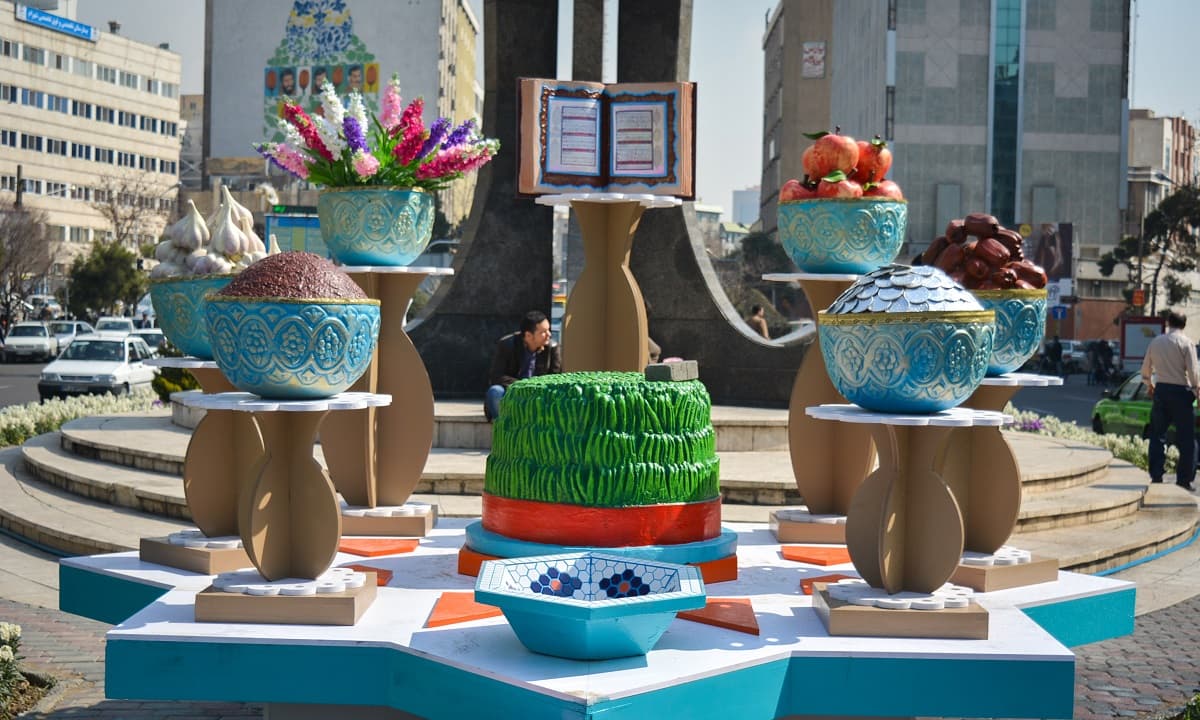
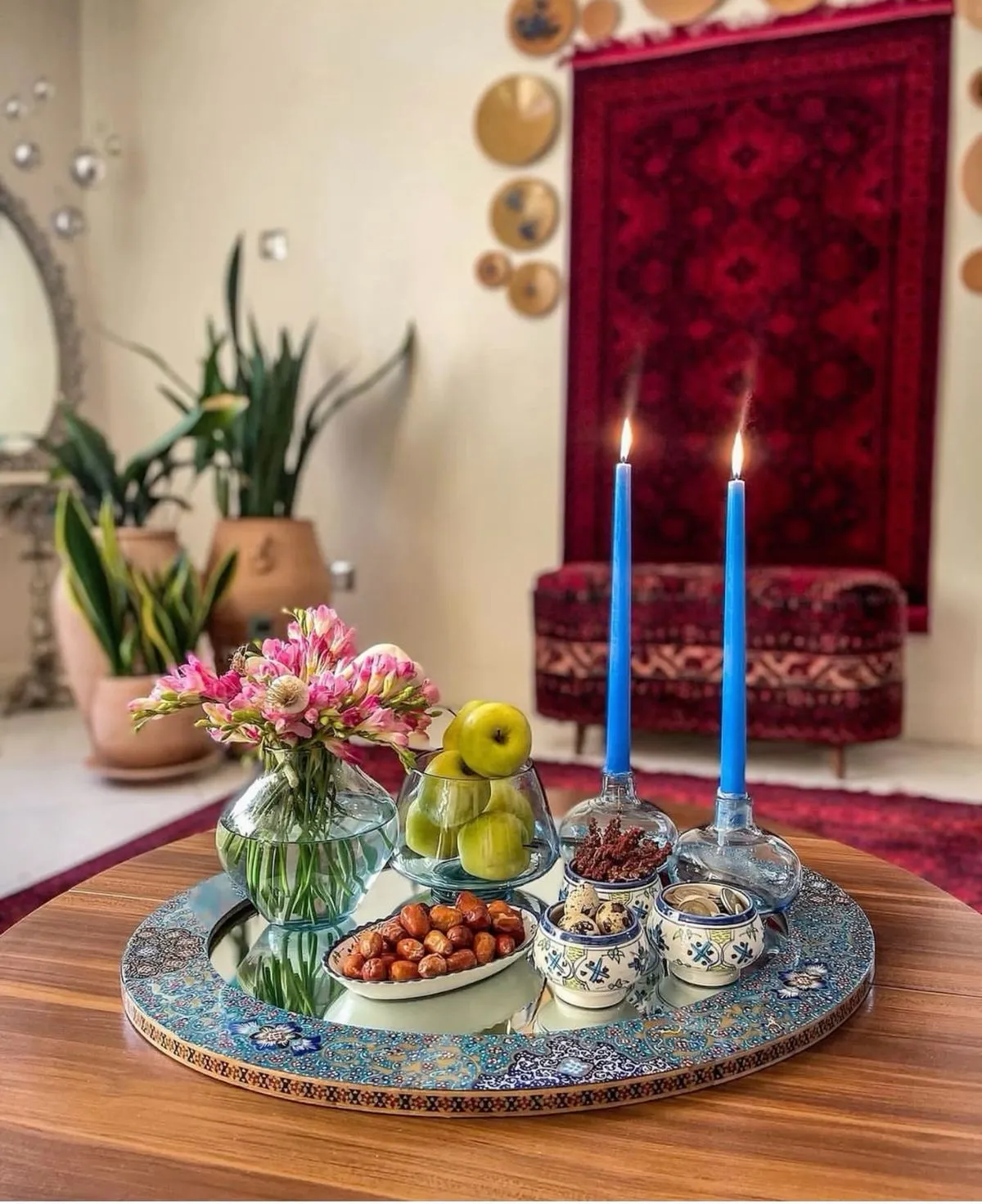
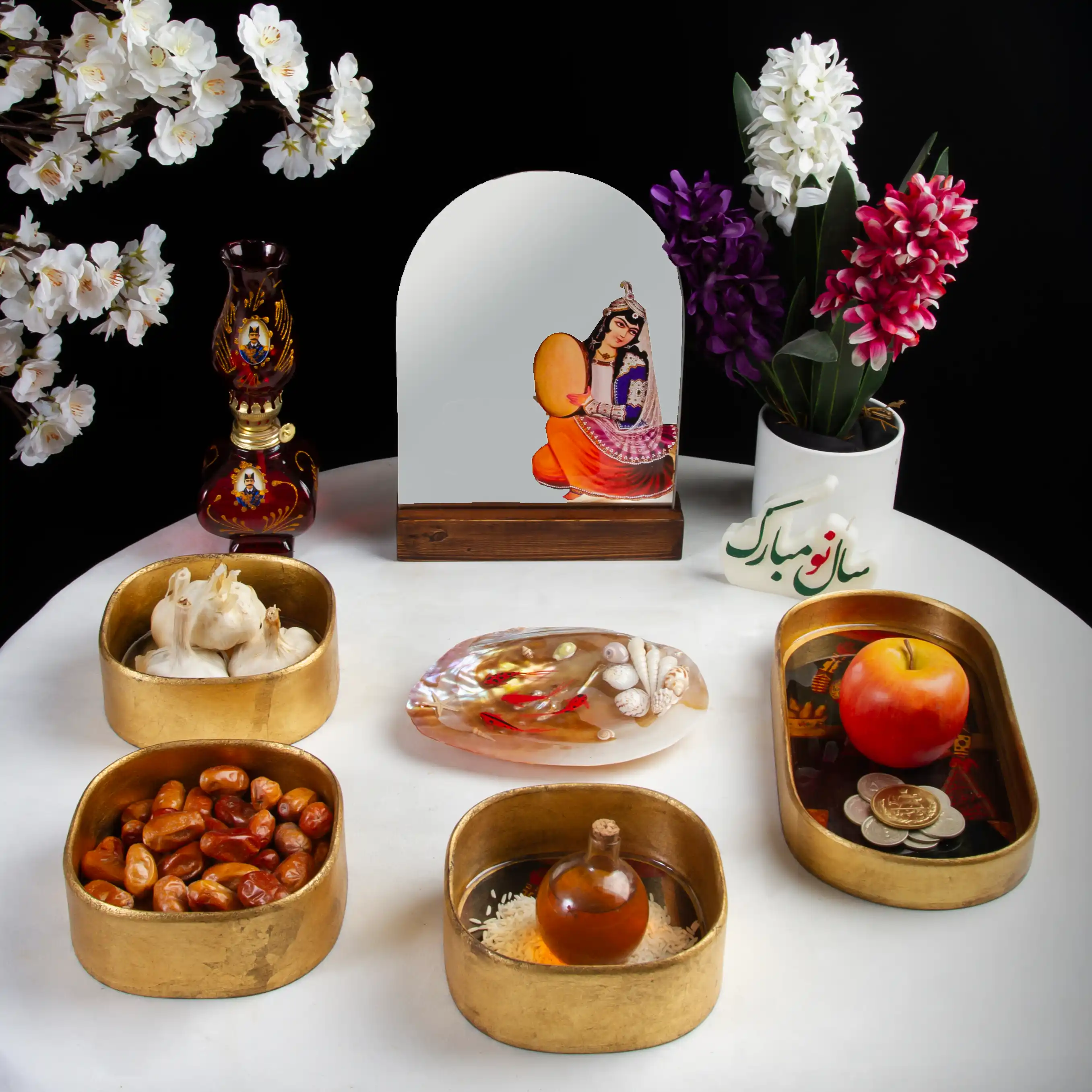
Comments